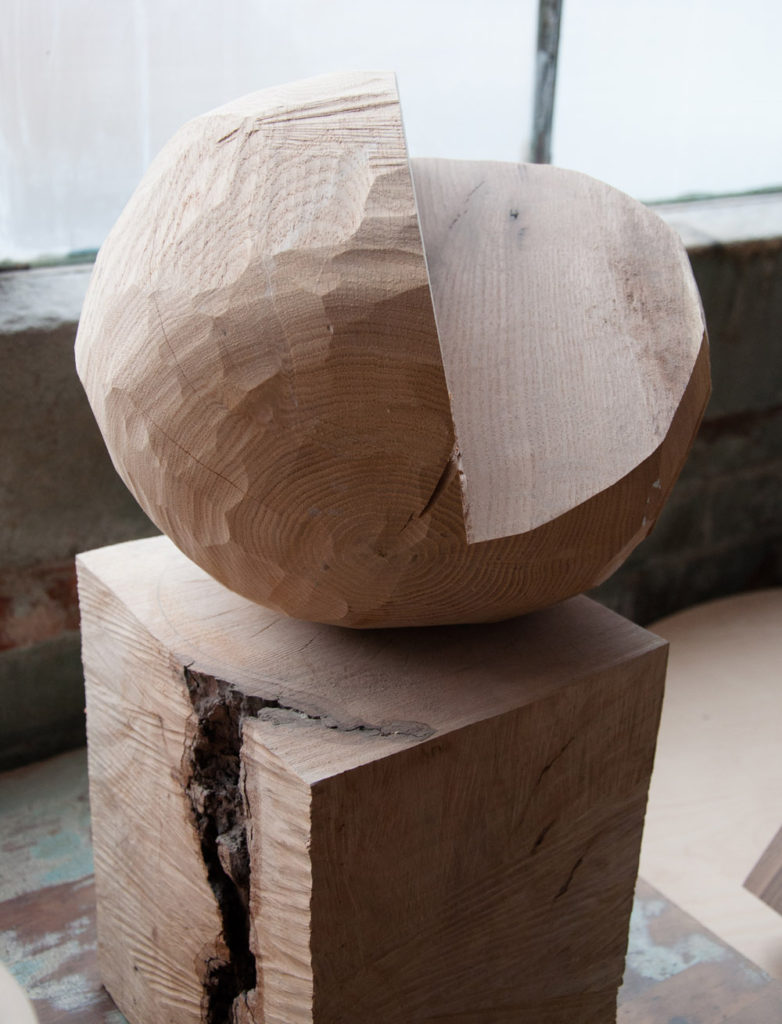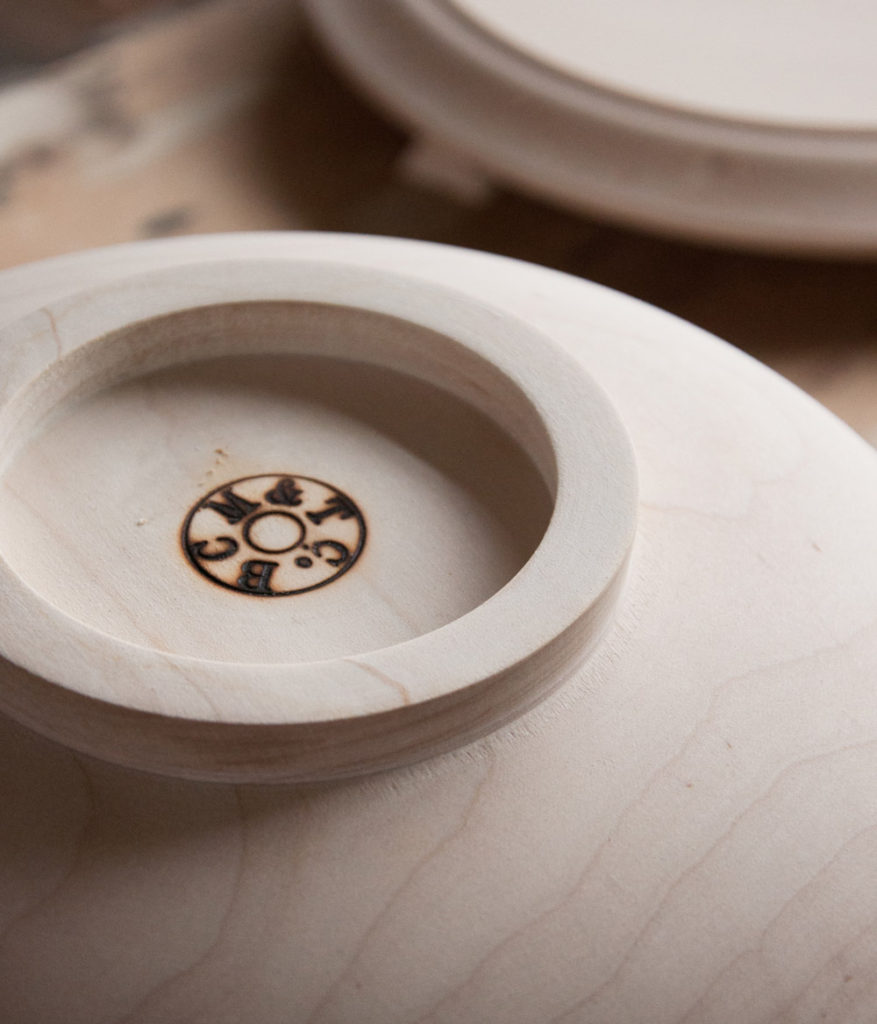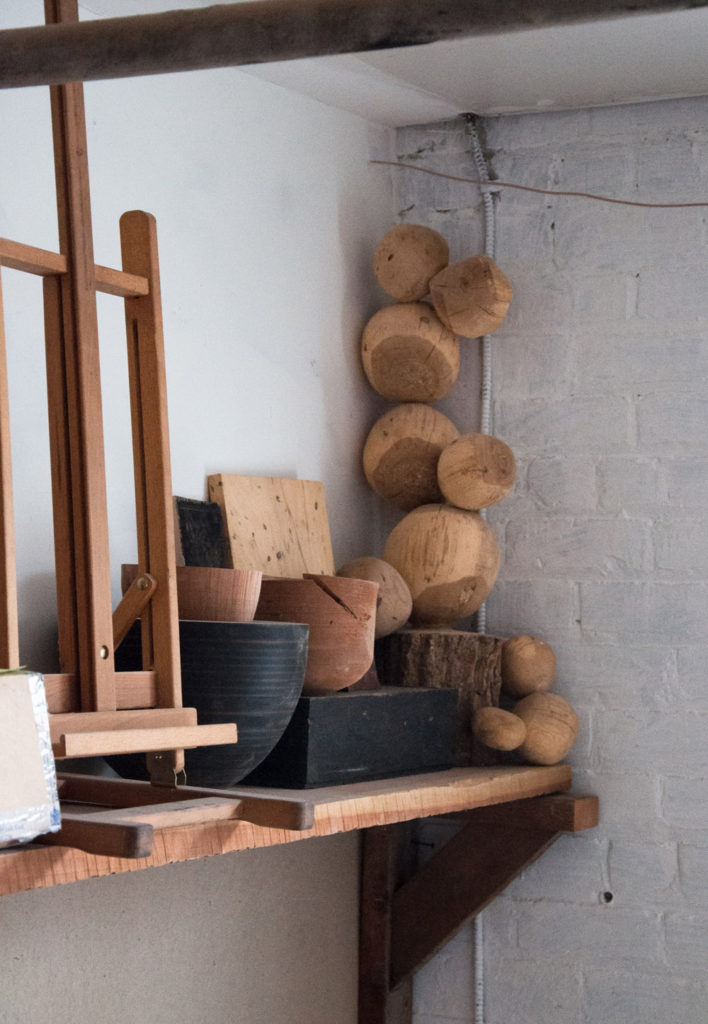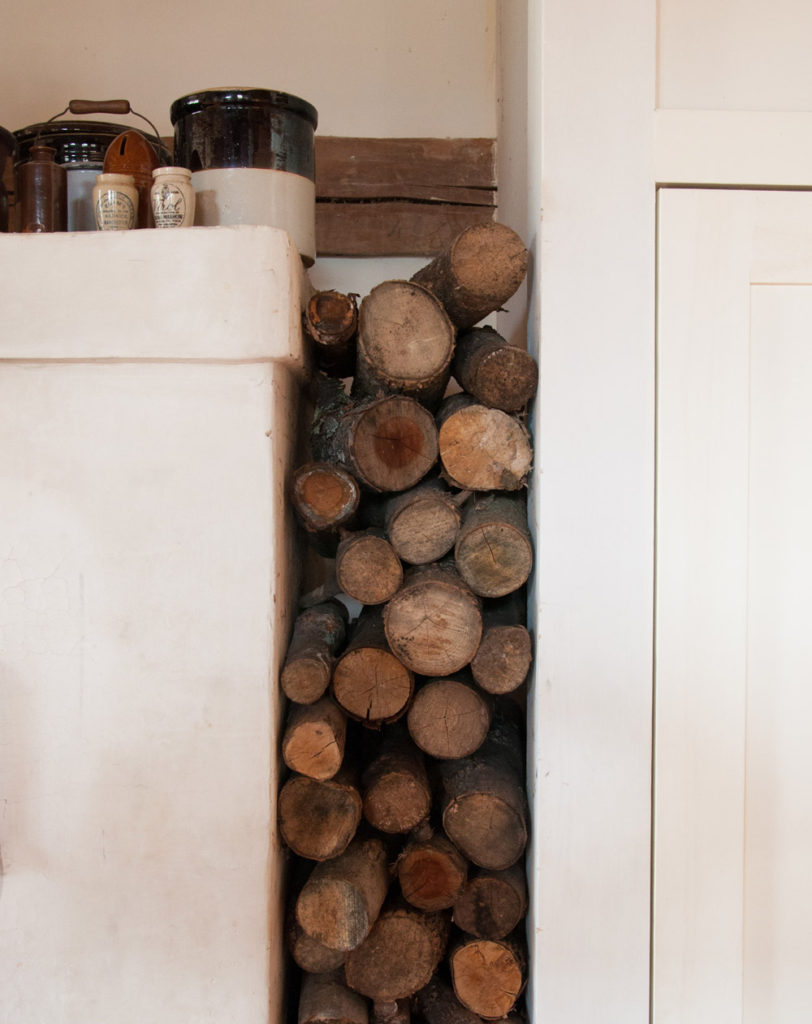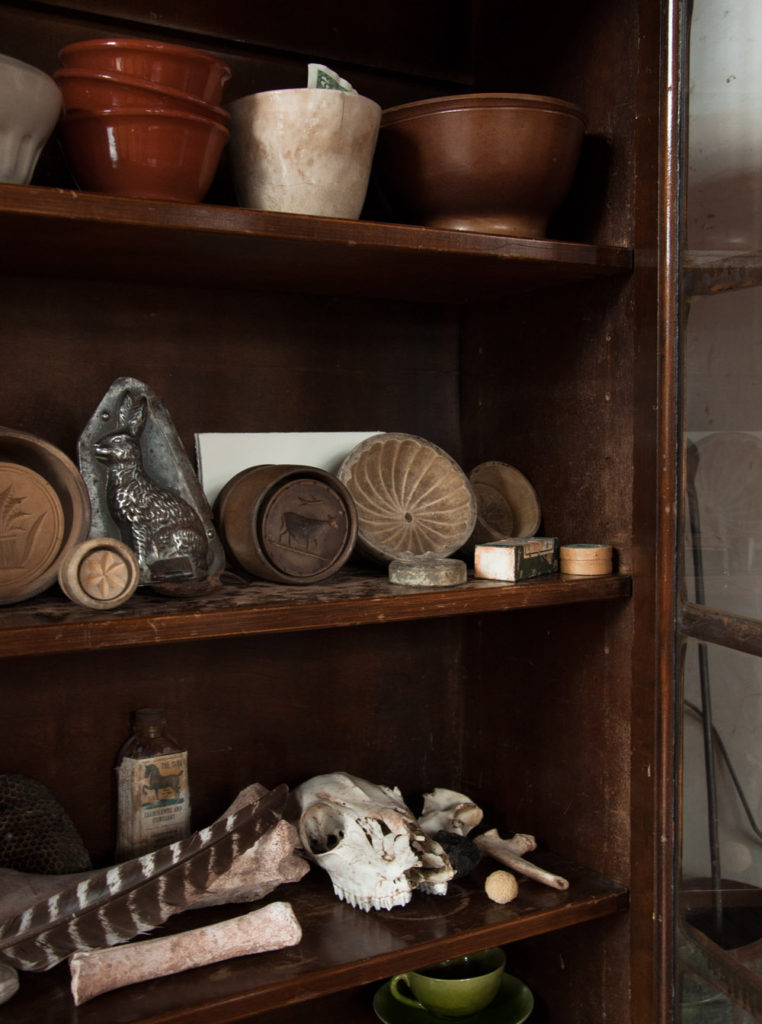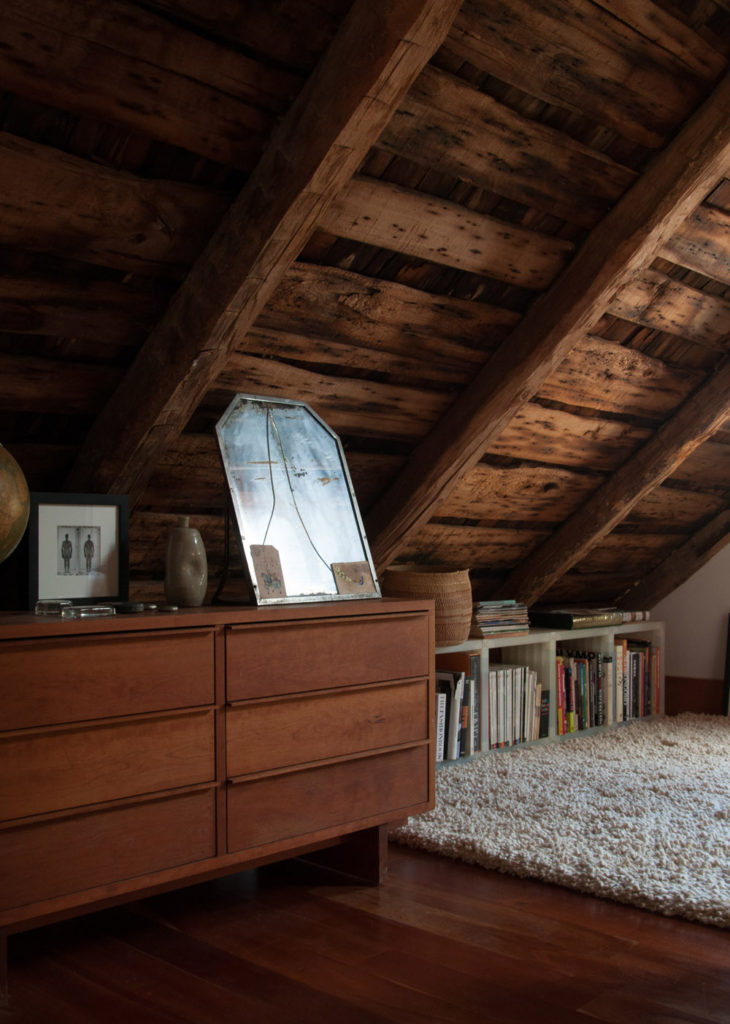The Kingston, New York studio of Blackcreek Mercantile. Written and photographed for Design*Sponge.
—
On a drizzly November morning last week, I found myself standing in the Kingston, NY studio of Joshua Vogel, learning way more about bees than I ever thought humanly possible. Joshua, a wildly talented woodworker—and apparently quite the loquacious fellow—has just finished telling me about propolis, the bee-produced material that is a key ingredient in his company Blackcreek Mercantile’s cutting board oil. Did you know that this wondrous, naturally anti-bacterial varnish is the only thing aside from honey and wax that honeybees produce? Did you know that, in the winter, bees will form a massive huddle and vibrate in unison to keep warm? I certainly didn’t. Although I’m meant to be snapping photographs of the space, I can’t help but feel momentarily transfixed. Joshua’s obvious passion for everything he does is quite clear—and it’s infectious.
It’s this passion that led Vogel to create his two businesses—Blackcreek Mercantile and his fine art branch, Joshua Vogel. It’s also what led him to pen a do-it-yourself handbook on the art and history of hand-carved spoons, due out next fall from Chronicle Books. At his Midtown Kingston studio, housed in a former pajama factory, this passion is a guiding and energizing force. With a rambunctious and gung-ho team that includes woodworker Dan Votke, apprentice Max Friedman, and Josh’s partner, Kelly Zaneto, the atmosphere here is one of warmth, vitality, and conviviality. When I arrive, music is playing, coffee is brewing, wood is being turned, and Josh and Kelly’s daughter, Violet, is playing merrily in the office with studio assistant Rachel Silverbloom. If it was cold and dreary outside, one would never know.
This is to say nothing of Joshua’s actual work which is, simply put, absolutely stunning. Wonderful examples of lovingly handcrafted woodwork, Josh’s sculptures and design objects are beautiful both to look at and to hold. From elegantly carved spoons to luxurious black cutting boards, the boundary between art and functionality is practically non-existent. These are the sort of objects that one will want to use and display.
With the holidays just around the corner, Josh’s studio is producing at full-force, so we are thrilled that we were able to sneak in for a behind-the-scenes peek. We hope you enjoy the visit as much as we did!


